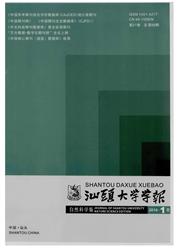

 中文摘要:
中文摘要:
按ASTM标准测定聚丙烯(PP)以及PP接枝马来酸酐(MAH)的产物(PP—g—MAH)、PP接枝丙烯酸丁酯(BA)的产物(PP-g—BA)的力学性能和耐热性能,并利用红外吸收光谱(IR)、X-射线衍射(XRD)、差示扫描量热法(DSC)、扫捕电子显微镜(SEM)和热失重分析(TGA)等方法测试它们的结构.实验结果表明:由于MAH或BA接枝后都不仅能保持PP主链的α品型.而且都带进极性基团C=O基,促使MAH接枝产物(PP—g—MAH)或BA接枝产物(PP-g-BA)分子链之间的相互作用力增大,从而弯曲强度、弯曲模量、拉伸强度和拉伸模量都大于PP.并且当温度高于442%时热稳定性也都大于PP.
 英文摘要:
英文摘要:
The mechanical performance and thermal stability of the polypropylene(PP), the grafted copolymer(PP-g-MAH) of PP grafted maleic anhydride(MAH) and the grafted copolymer (PP-g-BA) of PP grafted butyl acrylate (BA) were measured according to the ATSM standard method. The structures of these polymers were characterized by means of IR, XRD, DSC, SEM and TGA. The results showed that the grafted copolymers could not only maintain the a-crystal form of PP, but also bring in polar carbonyl groups (C = O) after PP grafted MAH or BA, which enhanced the intermolecular interactions between the molecular chain of grafted copolymer PP-g-MAH or PP-g-BA. Therefore, the flexural strength, flexural modulus, tensile strength and tensile modulus of PP-g-MAH or PP-g-BA were all better than those of PP, and the thermal stability of PP-g-MAH or PP-g-BA over 442 ℃ was also better than PP.
 同期刊论文项目
同期刊论文项目
 同项目期刊论文
同项目期刊论文
 Copper(I) coordination polymers of 2,2 '-dipyridylamine derivatives: syntheses, structures, and lumi
Copper(I) coordination polymers of 2,2 '-dipyridylamine derivatives: syntheses, structures, and lumi The alterations of tyrosine and tryptophane residues along with the evolution of tumor: Determinatio
The alterations of tyrosine and tryptophane residues along with the evolution of tumor: Determinatio 期刊信息
期刊信息
